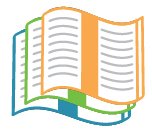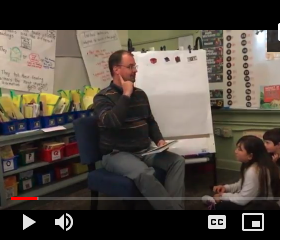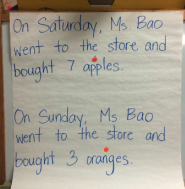Three-Read Protocol Link to this section

The Three-Read Protocol is one way to do a close read of a complex math word problem or task. This strategy includes reading a math scenario three times with a different goal each time. The first read is to understand the context. The second read is to understand the mathematics. The third read is to elicit inquiry questions based on the scenario.
Why would I use this strategy?
The Three-Read Protocol is designed to engage students in sense-making of language-rich math problems or tasks. It deepens student understanding by surfacing linguistic as well as mathematical clues. It focuses attention on the importance of understanding problems rather than rapidly trying to solve them. It allows for the use of authentic, instead of overly simplified, text. This strategy also allows for natural differentiation within a class of diverse learners.
When do I use this strategy?
This strategy can be used for math tasks that include complex language structures or language that lends itself to a variety of interpretations. While this is a particularly useful strategy for English Language Learners, all students can benefit from the deeper understanding of word problem structures and open-ended questioning.
How do I use this strategy?
The Three-Read Protocol uses the “problem stem” of a word problem. This is essentially the word problem without the question at the end. The purpose of presenting the problem stem alone is to have students focus on the contextual and mathematical information before dealing with any question that is involved. This gives students the freedom to create their own questions for a given scenario, which is an excellent skill to develop both in math and in reading in general. It is important that the teacher choose the problem carefully and anticipate potential linguistic and mathematical roadblocks the students may encounter.
1. First Read: Teacher reads the problem stem orally.
The teacher may have visuals to accompany the oral read of the problem stem. Students listen to the story with the goal of turning to a partner and sharing what they remember of it. Memorizing it is not necessary. Students may act out the problem if that helps them grasp the context.
Key Question: What is this situation about?
After the Turn-and-Talk, the teacher asks students to volunteer information they remember from the story. Teachers and students ask clarifying questions about the vocabulary as needed.
Read more about the Three-Read Protocol.
2. Second Read: Class does choral read or partner read of the problem stem.
The teacher projects the problem stem so the whole class can see it. The teacher leads the class either in a choral read of the problem or has partners read the problem orally to each other. Choral read is preferable because it allows all students to participate without excessive pressure, but a partner read can work fine if that is a better fit to the classroom culture or age of students. The teacher explains that math stories usually have information about quantities (numbers) and the units that are being counted.
Key Question: What are the quantities in the situation?
An example is 25 cats, where “25” is the quantity and “cat” is the unit. Sometimes the quantities are implied. For example, “some cats” implies a quantity but we do not know what it is. There can also be implied units. An example is “I have one at home.” The implied unit in this case depends on the context of the story. Bottom line: The discussion of quantities and units can be important for focusing student attention, but how deeply the teacher delves into the explicit and implicit information depends on the math and language objectives.
3. Third Read: Partner or choral read the problem stem orally one more time.
The teacher asks students to do one more read of the “story” and asks them to think, “What is missing to make this a good math problem?” Students volunteer their answers to that question. Responses will likely vary because many students assume there is a question without actually reading one. Without correcting student responses, the teacher probes until the class decides that a question is missing. The teacher asks, “Is there only one question that we can ask of this story?” Students responses may vary, but there are usually many different questions that can be asked of almost any scenario.
Key Question: What mathematical questions can we ask about the situation?
The teacher asks partners to determine at least two questions that can be asked using the problem stem. Students share their questions. The teacher writes a couple of the questions and clarifies language as appropriate. After each question, the teacher asks the class, “Can this question be answered with the information from this story?” and the class discusses why or why not.
4. Students work in collaborative groups on the problem.
Students work in groups to solve a question based on the problem stem. The teacher may assign a specific question for all groups to answer, or groups may choose a question from the list asked by the class. If groups are asked to choose their own questions, it is important that the teacher circulate and clarify expectations for the work. This can be an opportunity to differentiate the math work because the range of possible questions to a problem stem is broad.
Read more about the Three-Read Protocol in the Math Teaching Toolkit.
The original source materials for the Three Read Protocol is the Routine for Reasoning Fostering Mathematical Practices in All Students, where you will find additional resources.
This page was last updated on February 29, 2024



